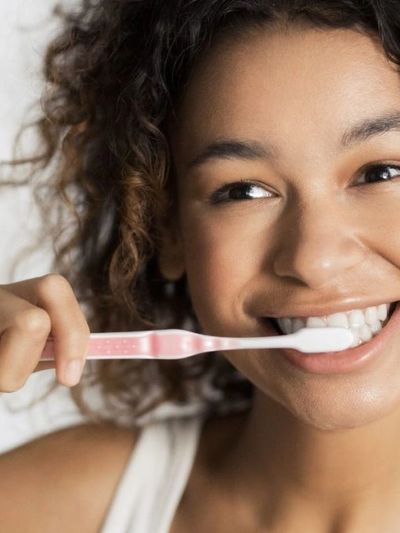Signed in as:
filler@godaddy.com
Signed in as:
filler@godaddy.com
Q: How long should I be brushing my teeth for?
A: You should be brushing your teeth twice daily (preferably morning and night) for two minutes each session.
Q: What kind of toothbrush should I be using?
A: When it comes to choosing a toothbrush the possibilities are endless. But there are a few things you should be on the look out for: a) soft or extra soft bristles (no medium or hard), using a toothbrush that is too hard will damage your gums, b) head size (if you have a smaller mouth, get a smaller brush head, even a kids brush if needed), c) bristle design (diamond heads with a narrow neck are good for hard to reach areas) and, d) grip handle (a larger handle may be ideal for dexterity issues). Also, be on the look out for any toothbrush with an ADA (American Dental Association) seal.
Q: How often should I replace my toothbrush/brush head?
A: Every three months (as the season changes, it's time to get a new toothbrush/brush head). Also, I recommend to replace your toothbrush/brush head after any sickness (i.e., flu, COVID, cold), those germs still live on your toothbrush/brush head. Better to just get a new one.
Q: Which is better, an electric toothbrush or manual toothbrush?
A: Clearly an electric toothbrush is a better choice. Statistics show that patients using electric brushes have 21% less plaque and 11% less gingival inflammation than manual users alone. It's definitely worth the investment!
Q: How do I brush my teeth?
A: There are actually 3 common techniques for optimal brushing (modified bass, stillman's and chater's). You will learn about these in the section below, but remember it's best to have a routine and stick with it. Check out my video below for demonstration.


Modified Bass Technique (Most Common)
1) Place your toothbrush at a 45-degree angle along the tooth and gumline (most common technique error: placing the toothbrush flat on the tooth)
2) Brush the teeth in a circular motion (moving slowly across each arch)
3) "Flick" the toothbrush in a downward motion (never flick towards the gums, you are just spreading bacteria where you want them removed)

Stillman Technique
1) Place toothbrush and align bristles in 45-degree angle
2) Start at gumline and move toothbrush in a downward motion across tooth surface
3) "Wiggle" brush at gumline to massage gums and focus on plaque removal (ideal for patients with active gingivitis)

Charter Technique
1) Place toothbrush at 45-degree angle against tooth (not against gum line)
2) Brush in circular or horizontal motions
3) Ideal for patients with orthodontics, partial dentures, periodontal surgery (gum grafting), recessed areas
This was my first video! It's a little harder than I thought brushing teeth pointed toward a video camera! If you have any questions, please e-mail me at hygienehelperspnw@gmail.com.
We use cookies to analyze website traffic and optimize your website experience. By accepting our use of cookies, your data will be aggregated with all other user data.